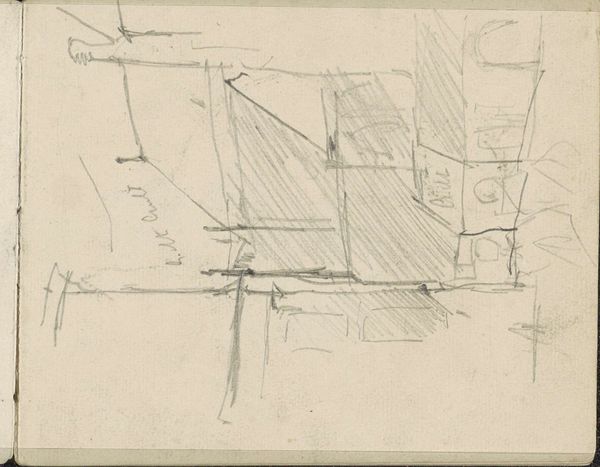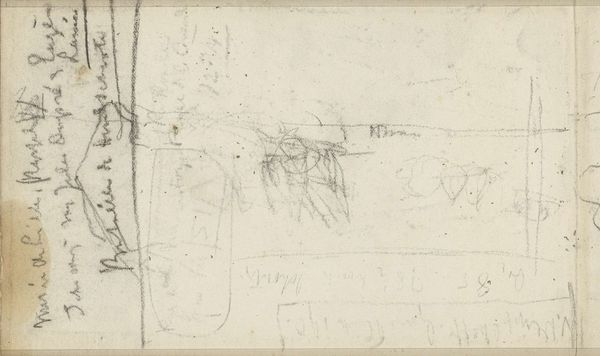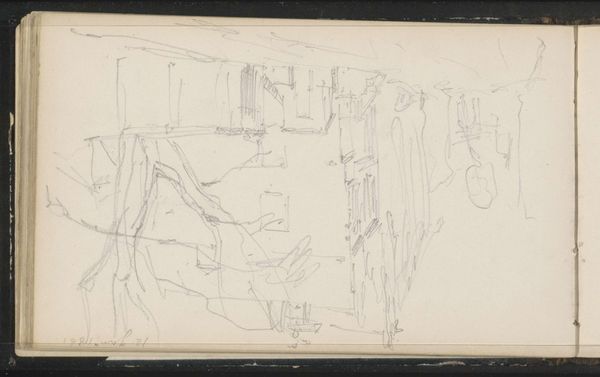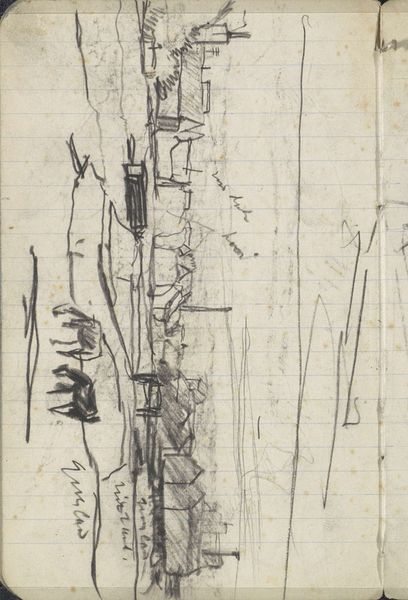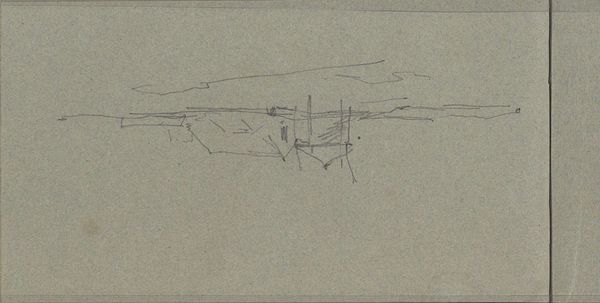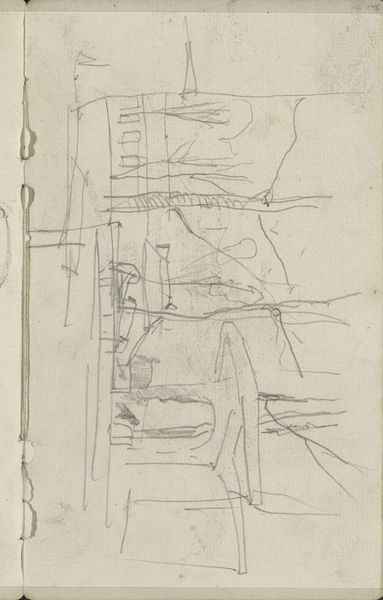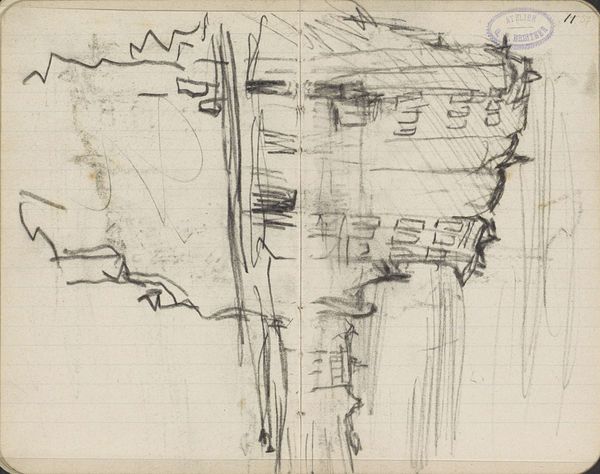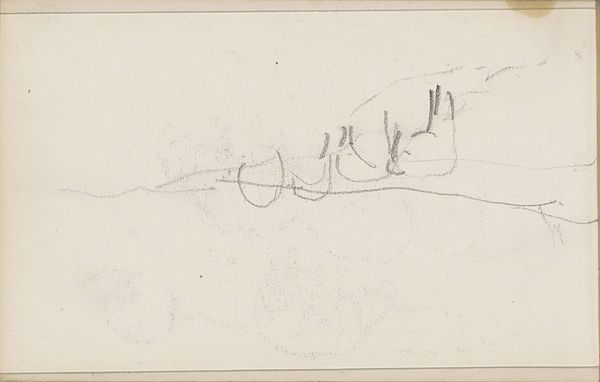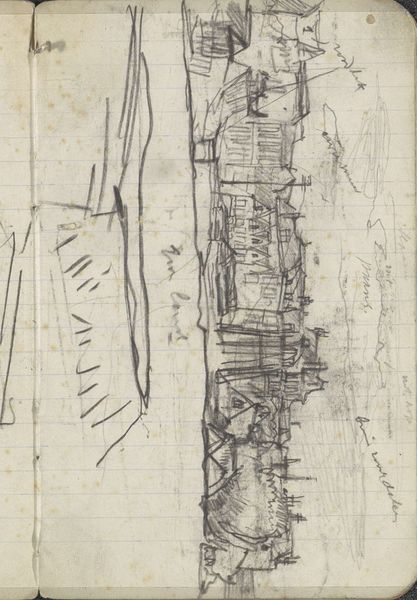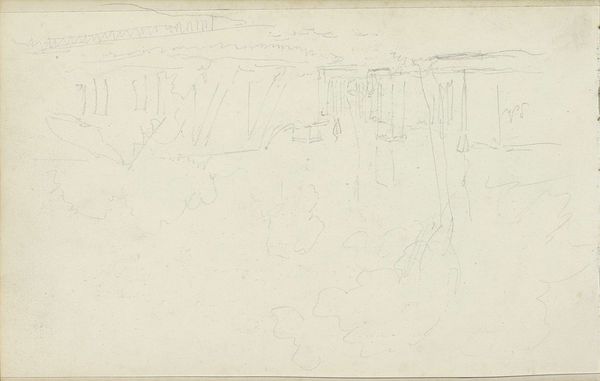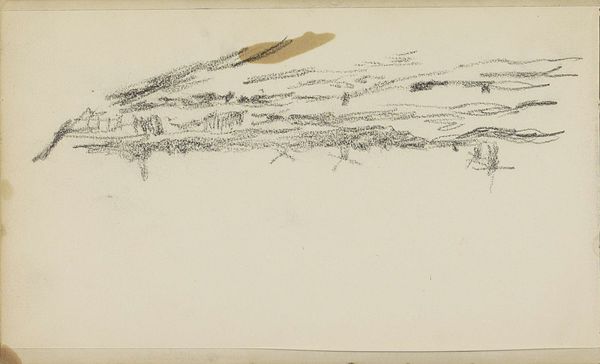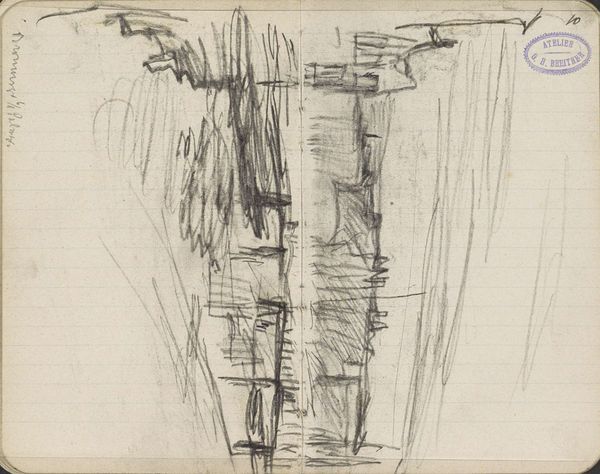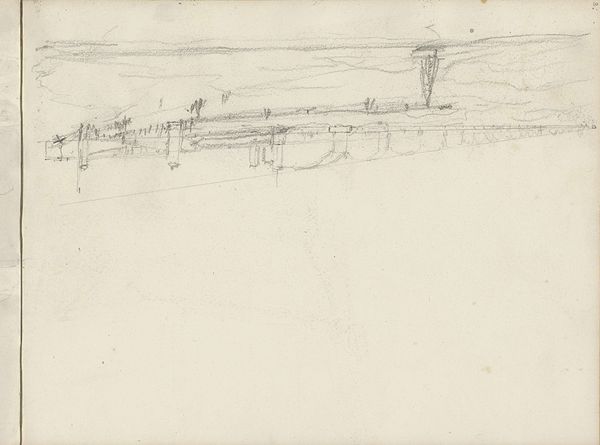
drawing, pencil
drawing
amateur sketch
impressionism
pen sketch
sketch book
incomplete sketchy
hand drawn type
landscape
personal sketchbook
ink drawing experimentation
pen-ink sketch
pencil
sketchbook drawing
cityscape
sketchbook art
Copyright: Rijks Museum: Open Domain
Editor: This is a drawing entitled "Damrak in Amsterdam, seen from the Nieuwe Brug," created by George Hendrik Breitner in 1888. It seems to be made using pencil and possibly pen and ink in a sketchbook. The sketch feels incredibly raw and immediate. What jumps out to you when you look at it? Curator: Immediately, I'm drawn to the visible labor in the work. We're not seeing a polished product here, but rather a moment captured, a working process made visible. The material evidence of the artist's hand is very present, from the pressure of the pencil to the quick, repetitive strokes. What can this tell us about the context of its creation? Editor: It's interesting that it's a quick sketch of what seems like a cityscape... Curator: Exactly. Breitner was known for documenting the urban landscape and everyday life of Amsterdam. The sketch medium then becomes relevant, doesn’t it? This wasn't meant to be a grand statement, but a record, perhaps even a study for a larger work. Consider the ready availability and cheap cost of pencil and paper – perfect for capturing fleeting impressions of a rapidly changing city, recording its industrial growth, its burgeoning working class. Do you see evidence of this? Editor: Now that you mention it, I notice a focus on architectural structures, which were likely made possible through a whole industry of materials, trades and labor! So, it really tells a lot about the process of urban development... Curator: Precisely. The seemingly simple act of sketching here is embedded within a complex network of production, labor, and ultimately, consumption. It almost becomes a critique, subtly questioning what’s been prioritized at the time by those industries, wouldn't you agree? Editor: Absolutely! Viewing it through that lens gives so much more meaning to what could seem like just an average cityscape drawing. Curator: Exactly! The material realities of the work, the "how" and "why" it was made, opens up new ways of understanding it within its social context.
Comments
No comments
Be the first to comment and join the conversation on the ultimate creative platform.
